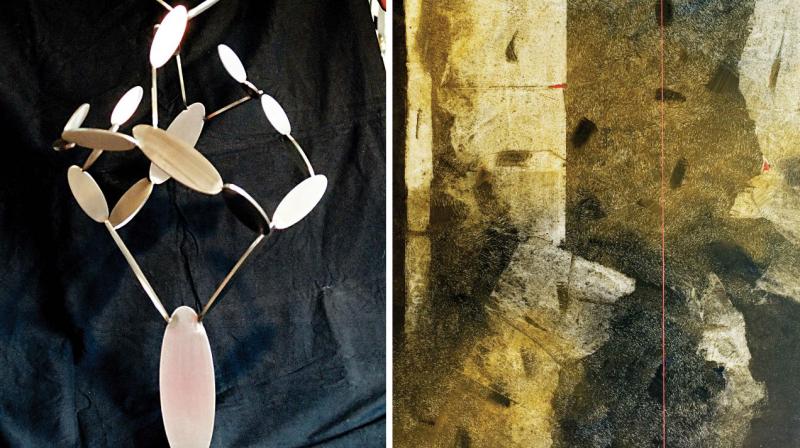Something about this tent just got bigger!

Being an artist in India in the 60s and 70s meant a fraught existence, without galleries, media support and very little demand for art. It was at that point that the noted artist Yusuf Arakkal suggested forming the Karnataka Painters, a small group dedicated to promoting contemporary work.
This week, as Rangoli Metro Art Centre celebrates its fourth anniversary (May 8), BMRCL is putting together Pioneering Contemporaries Karnataka, a tribute to Arakkal, which celebrates the people who laid the foundations of what exists today: a city abuzz with galleries and young artists. “We want some of the best artists to exhibit with us,” said Vasanth Rao, PRO, BMRCL, a faithful patron of the arts himself. “It's an approachable space, not too intimidating for the common man, who still shies away from the idea of entering a gallery.” Artists like G.S. Shenoy, S.G. Vasudev, Balan Nambiar and of course, Arakkal, should be brought into the public arena, he believes. Science and Technology Takes Off, a stainless steel sculpture by Arakkal, was unveiled on M.G. Road on Wednesday evening, by Biocon in in collaboration with BMRCL.
Specially curated by Deepa Subramanian, founder, Galerie De'Arts, the show features 19 artists. “They contributed in varying degrees and there are several others who made a tremendous impact but aren't on the list,” she remarked. However, the show itself, she explains, was conceptualised back in 2011 by Yusuf Arakkal, as a tribute to KK Hebbar. As Arakkal wrote in his concept note for the 2011 show, “Apart from a few small groups and individuals, there was no focussed approach by artists working together, which was taking place in Andhra Pradesh and Tamil Nadu.” 'Thought art,' he writes, was happening all over the country, “But there was no movement as such and if someone wanted to create one, it would have been difficult for them because art was yet to emerge as a trade in the country. Karnataka was no exception either.”
 Artist S.G. Vasudev, whose works are part of the show at Rangoli too, started out in Chennai in the early 1960s and would visit Bengaluru every chance he got.
Artist S.G. Vasudev, whose works are part of the show at Rangoli too, started out in Chennai in the early 1960s and would visit Bengaluru every chance he got.
Artist S.G. Vasudev, whose works are part of the show at Rangoli too, started out in Chennai in the early 1960s and would visit Bengaluru every chance he got. “In 1963, I brought a show of contemporary artists to the city, which did very well. There was a group called We Four functioning at the time and they followed suit, organising shows.” Without galleries to back them, artists had to content themselves with renovating godowns and unused spaces to show their works.
In the late 1970s, the Karnataka Painters began at the behest of Yusuf Arakkal, and ultimately gave rise to the Kala Mela. Venkatappa Art Gallery, constructed by the state government in 1966, became their venue. Their backing came from two of the most celebrated artists at the time — M.F. Husain and K.K. Hebbar. “Husain and Hebbar both did a painting each, which were bought by the Karnataka government. That gave us the money to go ahead.” recalled Vasudev.
After that, galleries began to open across the city — Crimson, The Art Resource (now on Cunningham Road) was Bengaluru's first real art space, with others like Sumukha and Time and Space entering the fray soon after. Media support increased too, giving the younger generation of artists the encouragement they so badly needed.
What: Pioneering Contemporaries Karnataka
When: May 20, 6 pm
Where: Rangoli Metro Art Center, M.G. Road Boulevard

